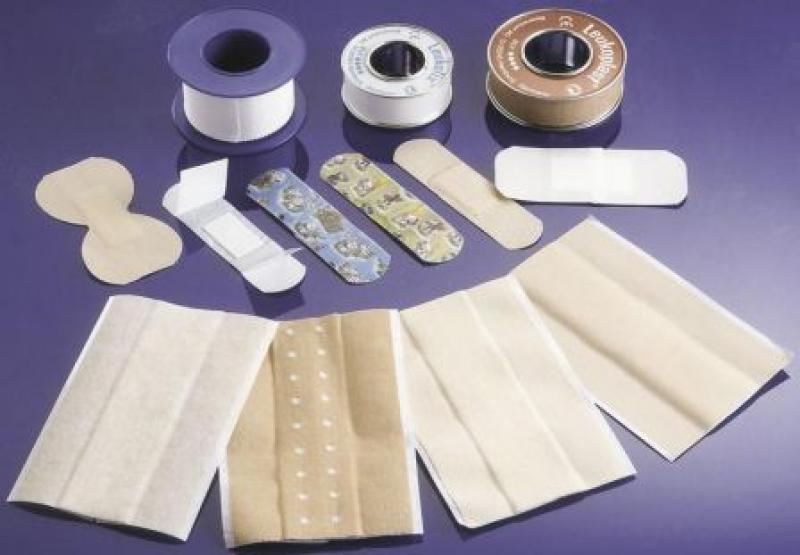Every home should have a basic first aid kit stocked with essential supplies like bandages, gauze, antiseptic, etc. Among these supplies, plastic bandages are one of the most versatile tools to have on hand for minor cuts, scrapes and wounds.
Types of Plastic Bandages
There are different types of plastic bandages available for varying wound sizes and locations on the body.
Finger Bandages
Small bandages designed specifically for wounds on fingers and toes. They are flexible and form-fitting to accommodate the curves and joints of fingers/toes. Various sizes are available.
Strip Bandages
Long, narrow Plastic Bandages strips that can cover linear cuts and abrasions on any part of the body. They come in small, medium and large widths.
Large Bandages
Wide strips or patches meant to cover larger areas like knees, elbows, heels etc. Shapes may be square, rectangular or irregular. Adhesive backs hold them securely in place.
Specialty Bandages
Specialized bandages for wound locations like knuckles, eyebrows, nose etc. Odd shapes and reinforced adhesive areas make them suitable for these areas.
Advantages of Plastic Bandages
Plastic bandages offer many advantages compared to other bandage types:
– Waterproof – Plastic keeps wound area dry and protects from external contamination. This prevents infection risk.
– Breathable – While waterproof, plastic is permeable to air and moisture from wound healing. This reduces chances of maceration.
– Strechable – Plastic stretches with skin movements without coming loose. It accommodates wounds in high-motion areas.
– Clear visibility – Transparent material allows wound monitoring without disturbing bandage. Colour/drainage changes can be seen.
– Easy application – Self-adhesive backs make plastic bandages simple to apply neatly without tape or help.
– Long lasting – Once applied, plastic bandages can stay on for days unless stated otherwise on packet.
– Minimal trauma – Removing plastic bandage doesn’t pull or stick to scabs unlike some cloth bandages.
Uses and Applications
The versatility of Plastic Bandages allows their use in many first aid scenarios:
Minor Cuts and Abrasions
Gently holds together wound edges of cuts, scrapes and grazes. Keeps area clean and protected.
Burns
Forms an effective sterile and breathable coverage over minor burns and blisters.
Puncture Wounds
Covers and protects puncture wounds from foreign bodies and friction when healing.
Blisters
Protects drained or intact blisters from further irritation and infection during healing.
Insect Bites and Stings
Calms itching and holds anti-itch cream in contact with bites and stings.
After Procedures
Secures non-stick pads or gauze material over stitches, drain sites, incisions after procedures.
Everyday Injuries
Bandages are often first choice by parents to cover children’s everyday knee/elbow scrapes safely at home or school.
Wound Care and Healing
When used appropriately, plastic bandages aid wound healing by keeping area clean and moist. They protect wounds from friction and inadvertent damage without restricting motions or complex redressings. An essential first aid supply, plastic bandages come recommended for minor injuries by doctors and nurses worldwide.
Safety Measures
While simple to use, it’s important to follow basic safety guidelines with plastic bandages:
– Check use-by date before application. Outdated bandages may cause infections.
– Gently clean area prior to applying bandage. Remove any debris or medication residues.
– Avoid bandaging embedded foreign objects, severe bleeding wounds or third-degree burns. Seek medical help for such injuries.
– Watch for signs of infection like increased pain, swelling, redness or pus. Remove bandage and consult a physician immediately if infection occurs.
– Do not reuse disposable bandages. Apply a fresh bandage if previous one becomes saturated or dirty.
– Store bandages in a cool, dry place. High heat or humidity may damage adhesive.
– Remove bandages carefully. Peel slowly from one end avoiding pulling on wound edges or scabs.
*Note:
1. Source: Coherent Market Insights, Public sources, Desk research
2. We have leveraged AI tools to mine information and compile it




